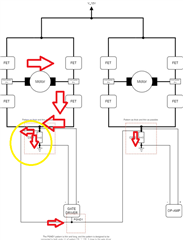Other Parts Discussed in Thread: DRV8705-Q1
Hi Shinya,
You had reviewed the schematic of DRV8718-Q1 on previous post below. There are additional questions on low-side current sense application. Please check it below and let me know.
230822_SCH_feedback_DRV8718_low-side current sense.pdf
In this circuit we want to monitor the current using the low side concept. Is it correct to connect PGNDx to the + terminal of RSHUNT? We are currently evaluating the product after production, and it appears that there is an offset in the DRV8718 diagnostic function, so we would like to contact you to confirm.
Additionally, there is current sensing voltage interference between loads that commonly use PGND1 or PGND2, so we are reviewing the impact on the PGNDx connection point above and would like to request confirmation of the above information.
Regards,











